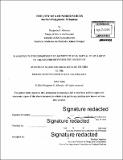| dc.contributor.advisor | Rafi Segal. | en_US |
| dc.contributor.author | Albrecht, Benjamin S. (Benjamin Simon) | en_US |
| dc.contributor.other | Massachusetts Institute of Technology. Department of Architecture. | en_US |
| dc.coverage.spatial | e-gx--- | en_US |
| dc.date.accessioned | 2017-01-12T18:32:16Z | |
| dc.date.available | 2017-01-12T18:32:16Z | |
| dc.date.copyright | 2016 | en_US |
| dc.date.issued | 2016 | en_US |
| dc.identifier.uri | http://hdl.handle.net/1721.1/106410 | |
| dc.description | Thesis: S.M., Massachusetts Institute of Technology, Department of Architecture, 2016. | en_US |
| dc.description | Pages 156 and 157 blank. Cataloged from PDF version of thesis. | en_US |
| dc.description | Includes bibliographical references (pages 150-151). | en_US |
| dc.description.abstract | Berlin's multiple layers and its eclectic urban character of the past 100 years have resulted in a city rich with different architectural voices and urban ideals. The constant making and unmaking of Berlin's urban form has become part of the its unique DNA. Yet, after its reunification in 1989, a new voice emerged which began to strongly dominate the city's other "voices". Reacting to the traumas of the previous century, this voice, now termed "The Critical Reconstruction," attempts to glaze over the city's rich and conflicted personalities of the past. It resurrects a convenient and conservative interpretation of the 19th Century city and its bourgeois ideal of urbanity to "beautify" and "unify" the urban environment. New projects that appear old, zoning laws that dictate all new inner-city developments to mimic Berlins fictive and idealized past, and many other planning and design operations, most symbolically the recent reconstruction of the Stadtschloss (City Castle), are all representative of this trend. This "Critical Reconstruction" approach continues to lead the city into an architectural-urban monoculture, creating a homogenous image of the city, overpowering its other voices. Where there was once a plurality, now stands a single voice above the rest. This project brings to the forefront a polyphonic mechanism by which Berlin's diminishing other voices can recover and regain a prominent role in shaping its urban character. By redeveloping the principles of each voice into spatial operations, speculative interventions into the city fabric redraw the image of the city through a manipulation of the lens through which the city is read by its users. | en_US |
| dc.description.statementofresponsibility | by Benjamin S. Albrecht. | en_US |
| dc.format.extent | 157 pages | en_US |
| dc.language.iso | eng | en_US |
| dc.publisher | Massachusetts Institute of Technology | en_US |
| dc.rights | M.I.T. theses are protected by copyright. They may be viewed from this source for any purpose, but reproduction or distribution in any format is prohibited without written permission. See provided URL for inquiries about permission. | en_US |
| dc.rights.uri | http://dspace.mit.edu/handle/1721.1/7582 | en_US |
| dc.subject | Architecture. | en_US |
| dc.title | The city of a hundred voices : Berlin's polyphonic urbanism | en_US |
| dc.title.alternative | Berlin's polyphonic urbanism | en_US |
| dc.type | Thesis | en_US |
| dc.description.degree | S.M. | en_US |
| dc.contributor.department | Massachusetts Institute of Technology. Department of Architecture | |
| dc.identifier.oclc | 966688772 | en_US |
